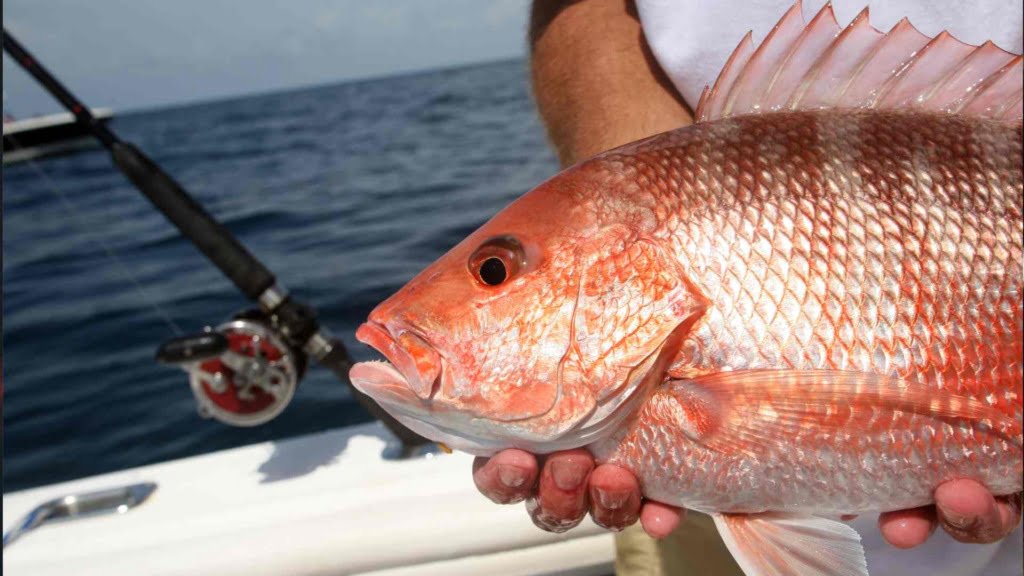Key Takeaways
| Fact | Description |
| Scientific Name | Lutjanus Campechanus |
| Habitat | Found in 30 and 620 feet deep, in the waters of the Gulf of Mexico, the Caribbean Sea, and the southeastern Atlantic coast of Mexico and the United States. |
| Diet | Diet primarily consists of Smaller fish, shrimp, worms, cephalopods (octopus or squid), and some plankton. |
| Size | Common adult length 24 inches (60cm) and some can grow as long as 39 inches (100 cm). |
Introduction
The Northern Red Snapper, scientifically known as Lutjanus campechanus, is a species of marine ray-finned fish. Not only is it important for business purposes, but it’s also a popular target for those who enjoy fishing as a sport calles game fish.
Physical Characteristics
The Northern Red Snapper, much like other snapper called the mangrove snapper, mutton snapper, lane snapper, and dog snapper, has a body that slopes and is squeezed from the sides. It has medium to large scales and a dorsal fin that’s full of spines. This snapper is quite big and red in color. It has teeth that are short, sharp, and resemble needles. We consider it mature when it grows to about 15 inches (39 cm) in length. However, it’s common to see adults that are 24 inches (60 cm) long, and some even grow to be as long as 39 inches (100 cm).
Habitat and Distribution
The Northern Red Snapper swims in the waters of the Gulf of Mexico, the Caribbean Sea, and the southeastern Atlantic coast of Mexico and the United States. They prefer to stay between 30 and 620 feet deep, close to the sea floor. Their favorite hangouts include rocky bottoms, ledges, ridges, and man-made reefs.
Diet
Northern Red Snappers are carnivorous predators. Their diet primarily consists of shrimp, worms, cephalopods (octopus or squid), and some plankton. Larger adults prey on smaller fishes found in flat bottom areas adjacent to the reefs.
Reproduction
Northern red snapper fish have a unique way of creating new life. Both the males and females release their eggs and sperm into the water column at the same time. This happens in the open water, which is why they’re called pelagic spawners. After about a day, the eggs hatch into larvae and the currents and tides carry them away. The most common time for this to happen is from June to August in the northwestern Gulf of Mexico, and from August to September off the southwestern coast of Florida.
Commercial Value
Red Snapper itself is among the most valuable fish in the Gulf. In 2020, commercial landings of red snapper were about 7.7 million pounds and were worth about $31.5 million.
Cooking Methods
You can prepare Northern Red Snapper in a variety of ways, including baking, grilling, and frying. If you’re baking it, first get your oven hot by setting it to 400 degrees Fahrenheit (204,4 degrees celsius). Then, put the fish on a baking sheet and let it cook in the oven for about 10-15 minutes. You’ll know it’s done when the fish is cooked all the way through.
If you prefer grilling, start by heating your grill to a medium-high temperature. Place the fish on the grill and let it cook for about 5-7 minutes on each side. Again, you’ll know it’s ready when the fish is cooked through.
For a more detailed explanation on how to prepare the red snapper, feel free to check out this website.
Conclusion
Red Snappers are truly fascinating creatures. Their vibrant coloration, intriguing behavior, and significant role in marine ecosystems make them a species worth learning about. Whether you’re an angler looking for your next big catch or simply a nature enthusiast interested in marine life, understanding more about Red Snappers can enrich your appreciation for these remarkable fish.
References:
- https://www.floridamuseum.ufl.edu/discover-fish/species-profiles/lutjanus-campechanus/
- https://en.wikipedia.org/wiki/Lutjanus_sebae
- https://oceanconservancy.org/blog/2013/05/20/10-key-facts-about-red-snapper/
- https://adventuresomekitchen.com/how-to-cook-a-red-snapper/

